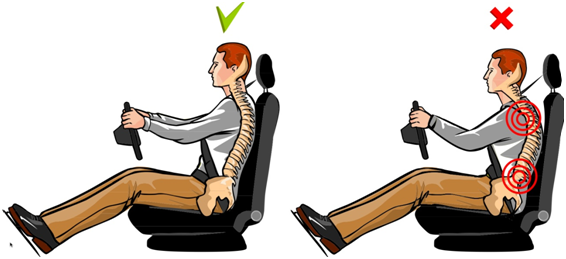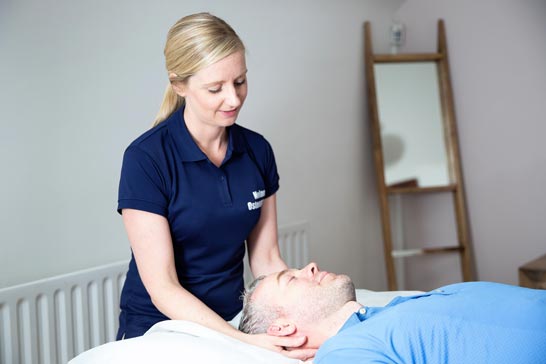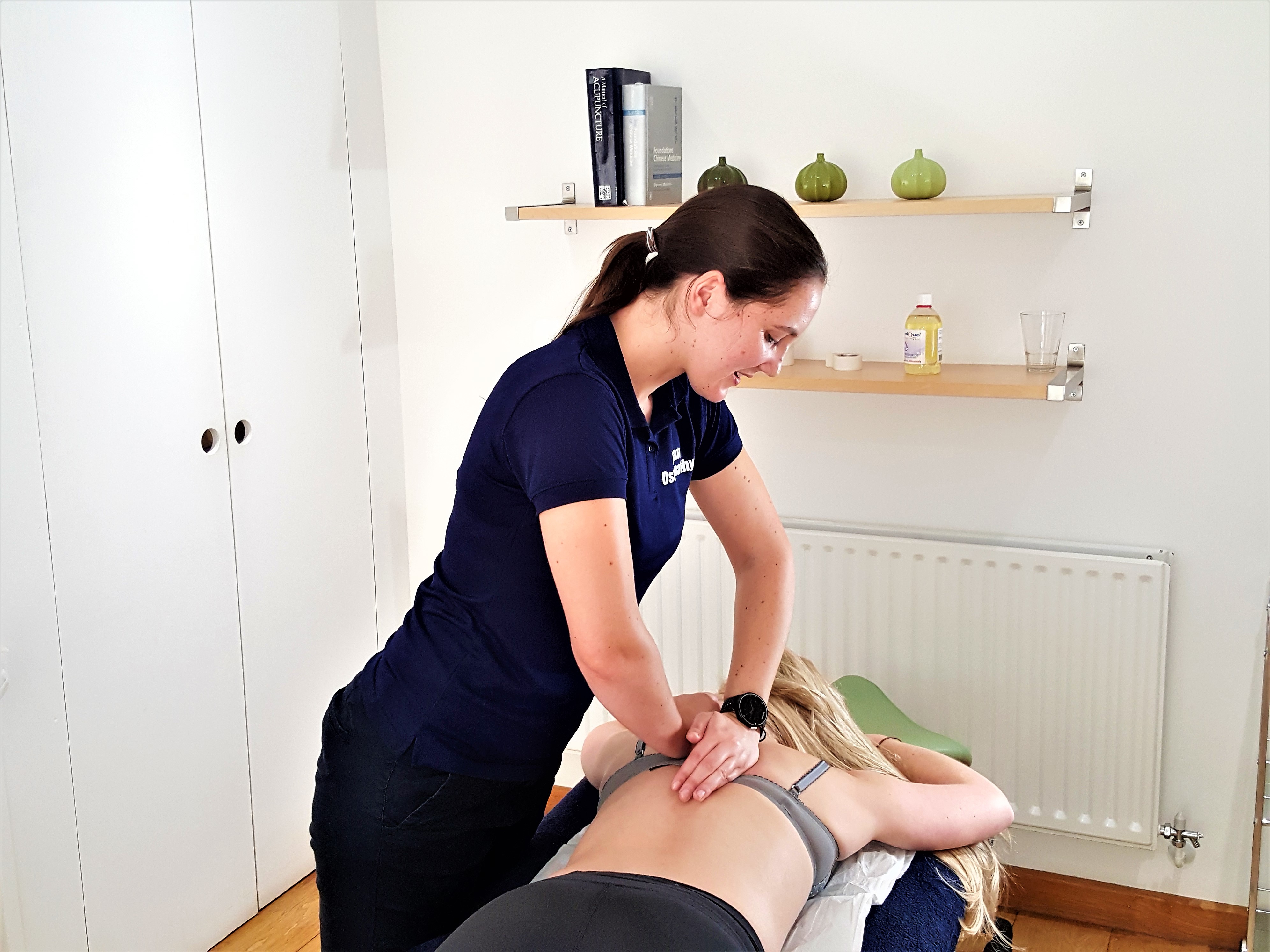Top Tips For Relieving Pain When Driving This Christmas
December 1, 2018
Maria Nolan

I read somewhere recently that people in the UK spend an average of 10-12 hours a week driving. Whether this is for commuting to work or for meeting up with family and friends, it is a long time to be sitting in a car and it can be a very uncomfortable experience if you’re in pain or trying to recover from an injury. Bad posture in the car can lead to and aggravate issues like headaches, tightness in the neck and shoulders, lower back pain and sciatica.
With that in mind, I’ve put together our top tips for improving your car posture and for keeping you fit and healthy behind the wheel this Christmas.
Getting into the car
- If you are suffering with back pain or an injury, the best way to get into the car is to turn your body at an angle and ensure the hips go first into the car. Once you are sitting on the edge of the seat, manoeuvre yourself into a comfortable position and then bring your legs into the car one by one.
Seating
- Don’t slump in the car seat as this is a sure fire way of hurting yourself. The slumping position is very demanding on your back when maintained over extended periods of time. Push your bottom as close as possible into the angle of the seat and the backrest.
- Ensure that your seat is at a high enough level so that your hips are above – or at least in line with – your knees. If the knees are higher than your hips, it can flatten the spine from its natural curved position and aggravate back pain. Most seats are easily adjustable nowadays but you can also use a cushion or a seating wedge to raise your seating position if required.
- Adjust the back (lumbar) support in the seat, so that it provides support along the whole length of your spine up to shoulder level. The lumbar support of the seat should fill the small of your back naturally and there should not be any gaps or overarching of the back.
Some cars may not have an in-built lumbar support in the seat but a rolled up towel or a small pillow will do the job just as well. The main thing to remember is not to overarch the natural curve in your back. The towel/pillow is too thick if it feels like there is too much pressure on your lower back.
- The seat should be upright and not reclined as this will put a lot of pressure on your neck as it is forced to bend forward excessively. Your shoulders should be able to rest comfortably against the backrest and shoulder contact must be maintained with the backrest when the steering wheel is turned. In other words be conscious of not rounding your shoulders forward.
- Move the seat forward to the point that allows you to easily depress the pedals fully, with a slight bend in the knee and without having to reach. If you are reaching, you are rotating your pelvis, which is a poor postural position to be in.
- Adjust the height of the steering wheel, ensuring that there is sufficient space between the wheel and your legs. Also make sure that you are not too close or too far away from the wheel. Ideally you should be able to rest your wrists on top of the wheel, with your arms extended without having to stretch.

Other general pointers to help reduce tension and pain
Having frequent rest breaks, especially for longer trips, will help prevent discomfort and pain. The Highway Code recommends that a 15 minute break be taken for every 2 hours of driving and you should get out of the car and walk around at each break.
If you’re stuck in traffic or stopped at traffic lights, do the following simple exercises;
Lengthen Your Spine
- Imagine a piece of string is coming from your head and someone is pulling it upwards
Chin Nods
- Gently pull your chin in towards your chest (give yourself a double chin)
- Hold for 3 seconds and return to the starting position
Shoulder Rolls
- Roll your shoulder up and backwards, hold for 3 seconds and release
If you have any questions above the above or have any concerns over an injury please feel free to give us a call or email
enquiries@nolanosteopathy.co.uk
to speak to one of our highly qualified and fully insured osteopaths. We offer all our patients a COMPLIMENTARY 15 minute meeting with one of our osteopaths to see if and how osteopathy can help them.
Thanks for reading.
Maria





